Editor’s note: Chen Jiahe is the chief investment officer at Novem Arcae Technologies. The article reflects the author’s opinions and not necessarily the views of CGTN.
The State Council, China’s Cabinet, published a key guideline for the high-quality development of China’s capital market on Friday. With the timing and the content of this guideline, together with the current status of the country’s equity markets, I believe this is a perfect time to find good investment targets in China. In fact, as an investor myself, I am putting 100 percent of my investment in the equities in the A-shares, B-shares and Hong Kong stock markets.
The first important factor is the timing of this guideline’s release. This is the third time that the State Council published such guidelines for the capital market. The last two guidelines were published in 2004 and 2014.
Those who know China’s capital market well will soon recall that there were two bull markets that followed those previous two guidelines.
The Shanghai Composite Index, one of China’s oldest benchmark stock indices, rose from 998 points to 6,124 points between 2005 and 2007, right after the first guideline was published, and again climbed from around 2,000 points to 5,178 points between 2014 and 2015 after the second guideline was published.
 An investor at a securities exchange in Hangzhou, east China’s Zhejiang Province, February 8, 2024. /CFP
An investor at a securities exchange in Hangzhou, east China’s Zhejiang Province, February 8, 2024. /CFP
An investor at a securities exchange in Hangzhou, east China’s Zhejiang Province, February 8, 2024. /CFP
Now comes the third guideline, which has been published at a time when China’s equity markets have been performing weakly in the past few years. Remember, investment history tells us that every bull market must be preceded by a bear market. Therefore, the publishing of the third guideline to support the country’s capital market can be a wonderful sign to find appropriate investment targets in China.
Let us look into the details of this guideline about the aspects it discusses. Overall speaking, this guideline states that China’s capital market must pursue high-quality growth and perform as an important cornerstone for the growth of China’s economy. Delving into the details, this growth shall be worked out from various aspects.
The first aspect is the quality of listed companies, which contains the improvement of the initial public offering (IPO) system, the supervision of listed companies, as well as the efficiency of the de-listing process.
With these three components employed in the future, China’s capital market can have high-quality listed companies and get rid of the companies that fail to meet the criteria, especially those companies that have committed fraud in their businesses and financial statements. Meanwhile, the punishment for misbehavior of listed companies will also be strengthened. This has already been expressed in the recent amendments to China’s securities laws and regulations.
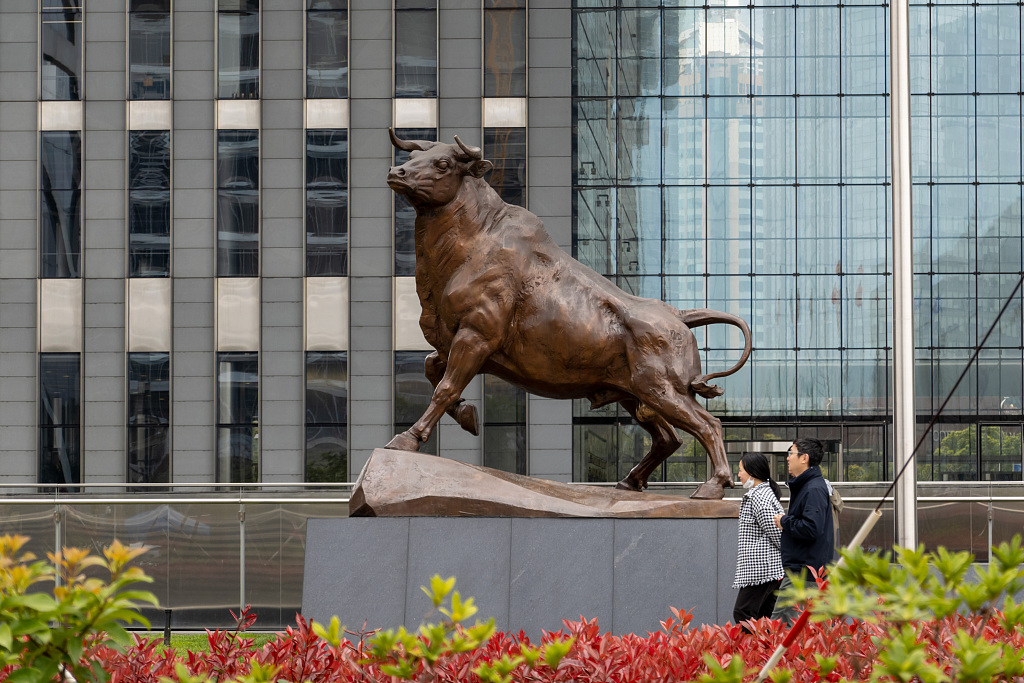 A view of the building of the Shanghai Stock Exchange, Shanghai, China, March 29, 2023. /CFP
A view of the building of the Shanghai Stock Exchange, Shanghai, China, March 29, 2023. /CFP
A view of the building of the Shanghai Stock Exchange, Shanghai, China, March 29, 2023. /CFP
The second important aspect of the guideline is the focus on regulation of financial institutions, including securities companies, mutual funds, hedge funds and so on. This includes many detailed areas, such as setting the qualification system for dominant shareholders of financial institutions, senior executives and fund managers, increasing the professionalism of financial institutions, maintaining a value-based, moderate industrial culture, among others.
In the global economy today, we all know that the importance of financial institutions is beyond dispute. Good financial institutions can generate enormous support to the economy, such as Berkshire Hathaway, managed by Warren Buffett and Charlie Munger, and Vanguard Group, founded by John Bogle. Conversely, financial institutions that are badly managed can cause disaster for the economy, as evidenced by the 2008 global financial crisis.
Another aspect that has been mentioned in the guideline is the regulating of market trading, for the purpose of maintaining a fair and stable market. Due to its inherent nature, the capital market is naturally volatile. Countless financial historical stories have taught us that once the capital market is running in an extremely volatile manner, serious damage can be dealt to the economy: companies can go bankrupt, stocks and funds can lose their value, the economy can shrink and the unemployment rate can rise. Therefore, a fair, well-regulated and stable capital market has an irreplaceable importance to the economy.
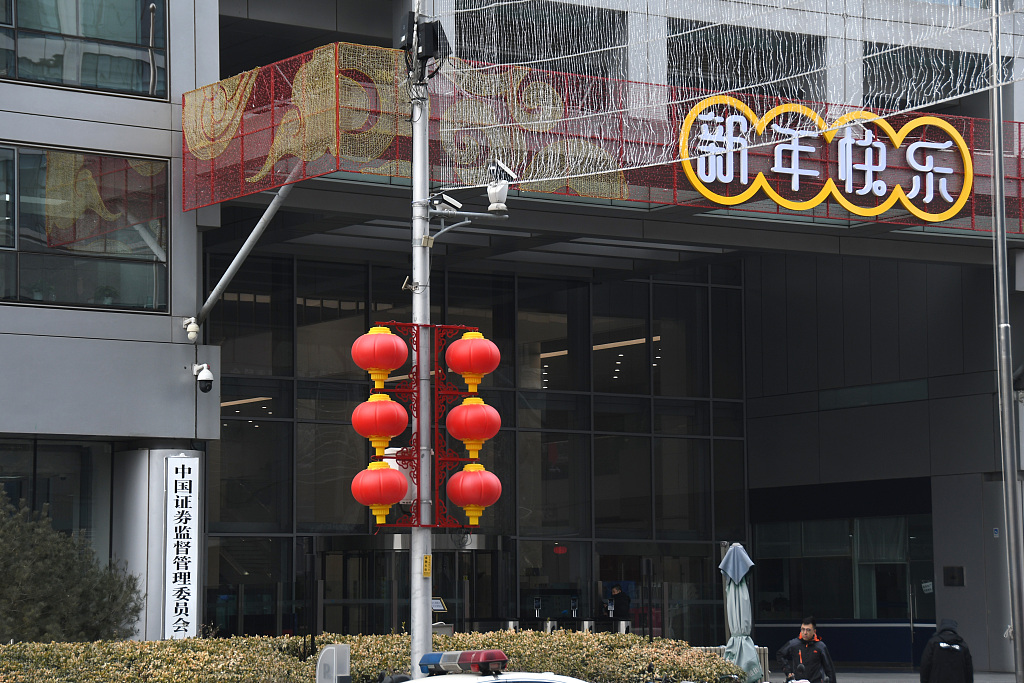 The China Securities Regulatory Commission building in Beijing, China, February 2, 2024. /CFP
The China Securities Regulatory Commission building in Beijing, China, February 2, 2024. /CFP
The China Securities Regulatory Commission building in Beijing, China, February 2, 2024. /CFP
Besides the aspects discussed above, this latest guideline has also emphasized many other aspects, such as the encouragement of long-term value investment in the capital market, reducing the cost of mutual funds, protection of small investors, the opening of the capital market to global investors and fund, design multiple capital markets so as to fit the different requirements of companies, strengthening law enforcement and anti-corruption efforts, so on and so forth. With all these details published in the guideline, investors can find the basic layout for the development of China’s capital market in the next decade.
Alongside the publishing of this guideline toward the high-quality development of China’s capital market, investors can also find an attractive capital market valuation, which is the foundation for a long-term bull market.
According to the data calculated by the Choice Financial Terminal, the Shanghai Composite Index is now trading at only 13 times the price-to-earnings (P/E) ratio, the Shanghai 50 Index is trading at 10 times the P/E ratio, and the Heng Seng Index is only trading at 8.5 times the P/E ratio. As a comparison, the S&P 500 Index is trading at 25 times the P/E ratio and the NASDAQ Index is trading at 40.6 times the P/E ratio.
 A stock image of a screen with market data depicting an upward bullish trend. /CFP
A stock image of a screen with market data depicting an upward bullish trend. /CFP
A stock image of a screen with market data depicting an upward bullish trend. /CFP
Beyond the main indices, investors can find more valuable investment targets among specified securities. For example, the Heng Seng High Dividend Yield Index is only trading at 5.2 times the P/E ratio, and the Shenwan Low P/E Ratio Index is trading at 7.1 times the P/E ratio. Among the constituent stocks of these indices, investors can find many wonderful targets: this is the reason why I am putting 100 percent of my money in stocks in China’s capital market and I am sleeping very well every night.
With the publishing of the latest guideline for the high-quality development of China’s capital market, as well as the low valuation of China’s equities, there are enough reasons to expect a bull market in China’s capital market in the coming years. Finding the right investment targets in this market can bring extraordinary rewards.
 Passengers trapped in a bus by floods are rescued by boats, Garissa, Kenya, April 9, 2024 /CFP
Passengers trapped in a bus by floods are rescued by boats, Garissa, Kenya, April 9, 2024 /CFP 

 Cheetah pack on the grassland of Kenya. /CFP
Cheetah pack on the grassland of Kenya. /CFP 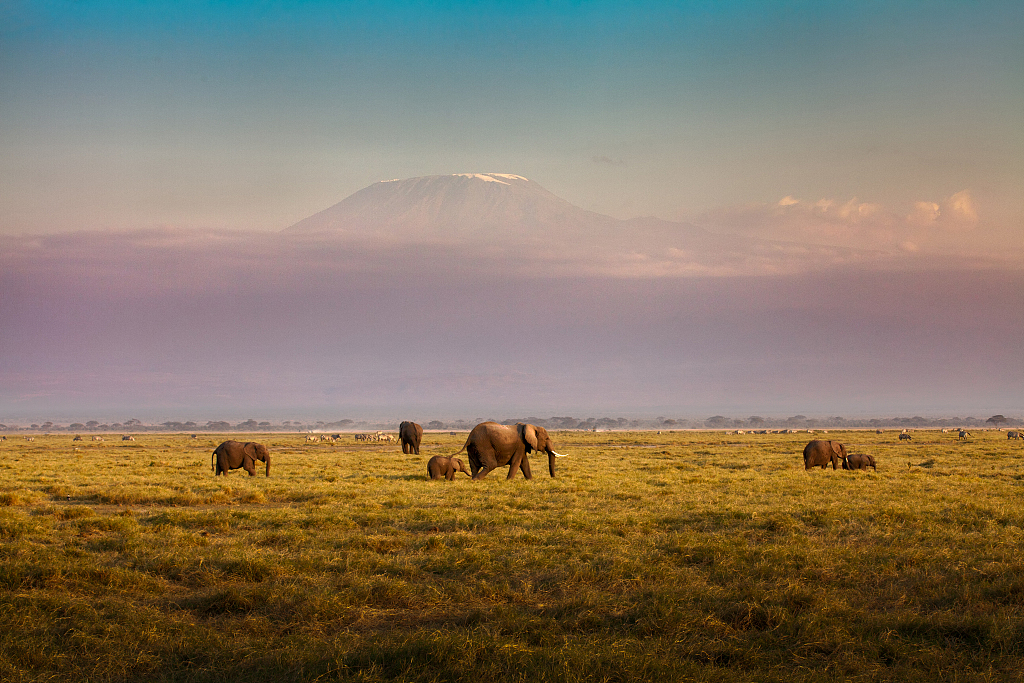 Scenery of African elephants on grassland of Kenya. /CFP
Scenery of African elephants on grassland of Kenya. /CFP 

 An aerial photo of Hainan International Convention and Exhibition Center, the main venue for the fourth China International Consumer Products Expo, in Haikou, south China’s Hainan Province, April 11, 2024. /CFP
An aerial photo of Hainan International Convention and Exhibition Center, the main venue for the fourth China International Consumer Products Expo, in Haikou, south China’s Hainan Province, April 11, 2024. /CFP  An exhibitor introduces products to guests at an exhibition hall at the Hainan International Convention and Exhibition Center, the main venue for the fourth China International Consumer Products Expo, in Haikou, south China’s Hainan Province, April 13, 2024. /CFP
An exhibitor introduces products to guests at an exhibition hall at the Hainan International Convention and Exhibition Center, the main venue for the fourth China International Consumer Products Expo, in Haikou, south China’s Hainan Province, April 13, 2024. /CFP 
 An investor at a securities exchange in Hangzhou, east China’s Zhejiang Province, February 8, 2024. /CFP
An investor at a securities exchange in Hangzhou, east China’s Zhejiang Province, February 8, 2024. /CFP  A view of the building of the Shanghai Stock Exchange, Shanghai, China, March 29, 2023. /CFP
A view of the building of the Shanghai Stock Exchange, Shanghai, China, March 29, 2023. /CFP  The China Securities Regulatory Commission building in Beijing, China, February 2, 2024. /CFP
The China Securities Regulatory Commission building in Beijing, China, February 2, 2024. /CFP  A stock image of a screen with market data depicting an upward bullish trend. /CFP
A stock image of a screen with market data depicting an upward bullish trend. /CFP 
 A view of the city of Rome, Italy. /CFP
A view of the city of Rome, Italy. /CFP 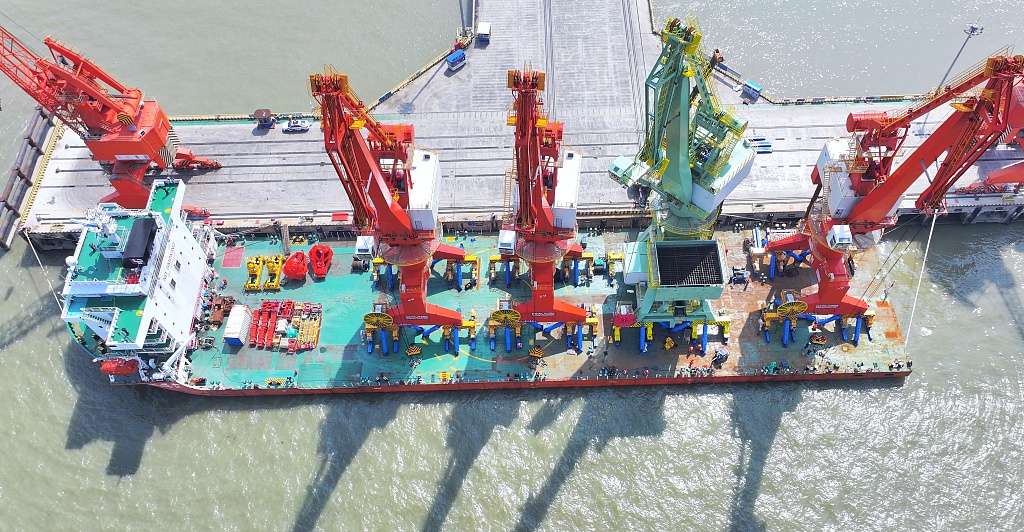 An aerial view of a container terminal at Lianyungang Port, Jiangsu Province, China. /CFP
An aerial view of a container terminal at Lianyungang Port, Jiangsu Province, China. /CFP 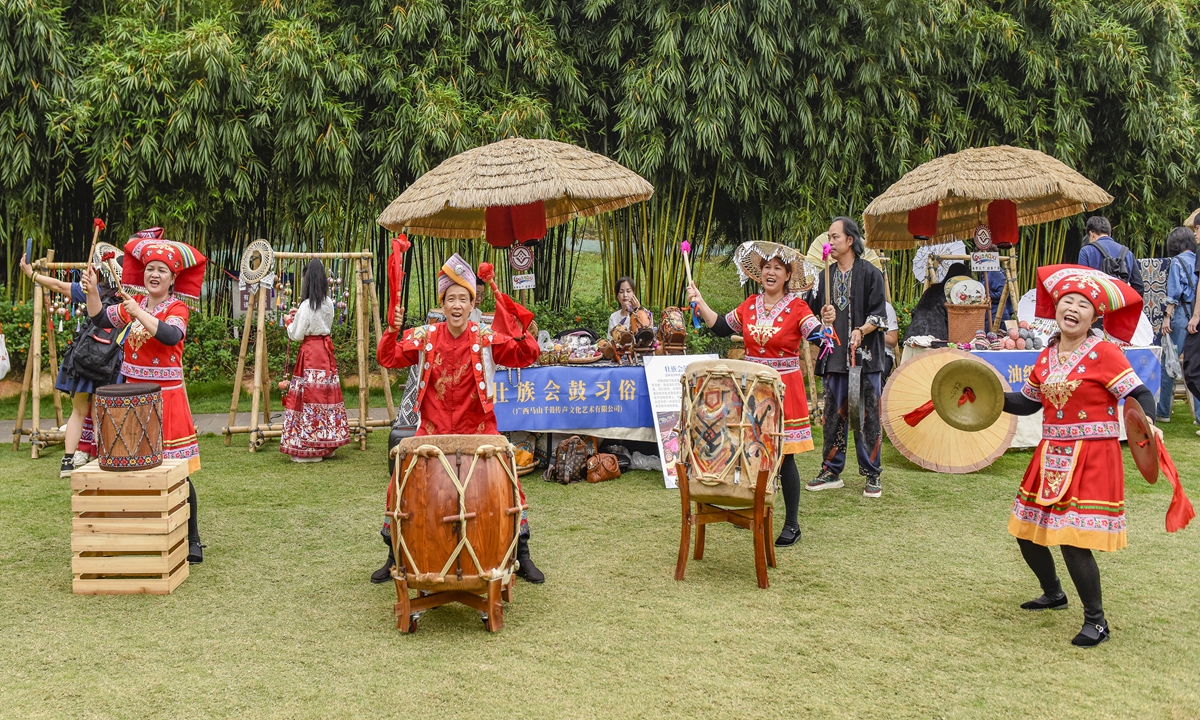
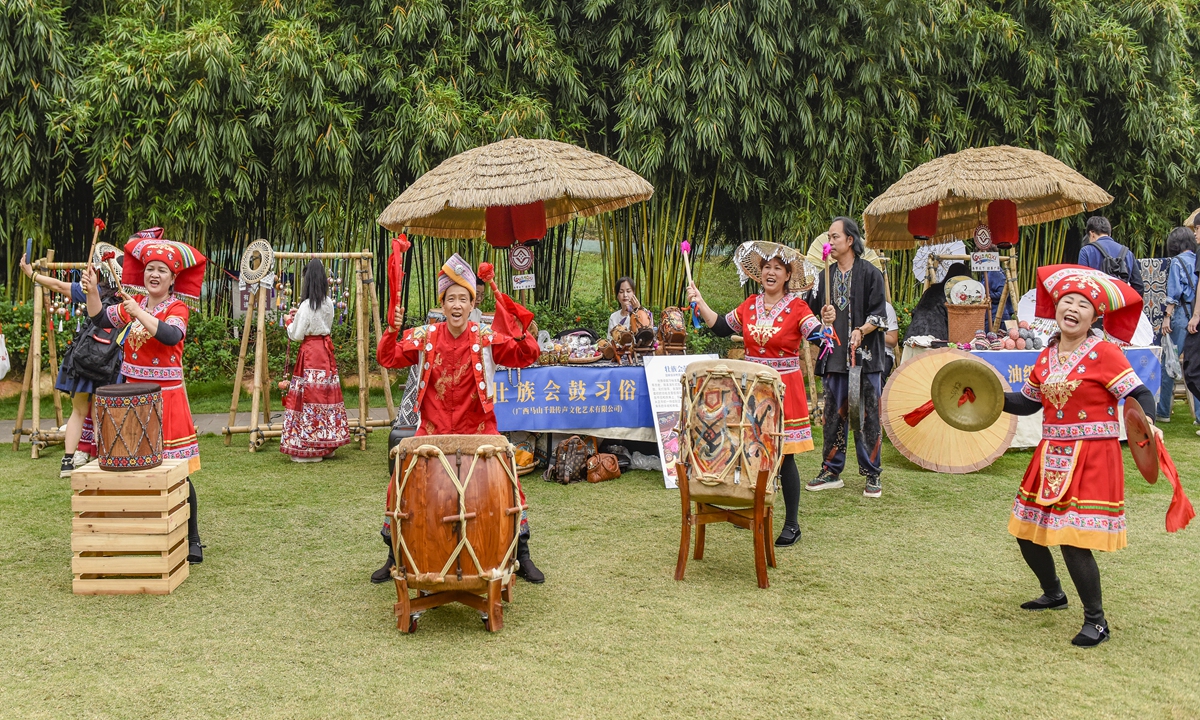
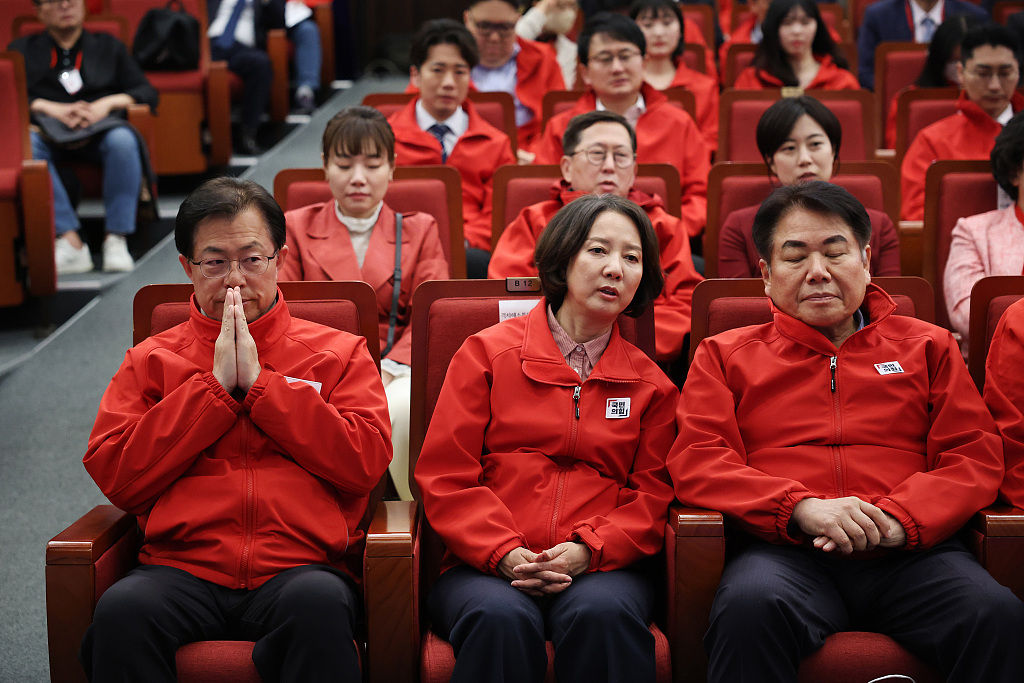
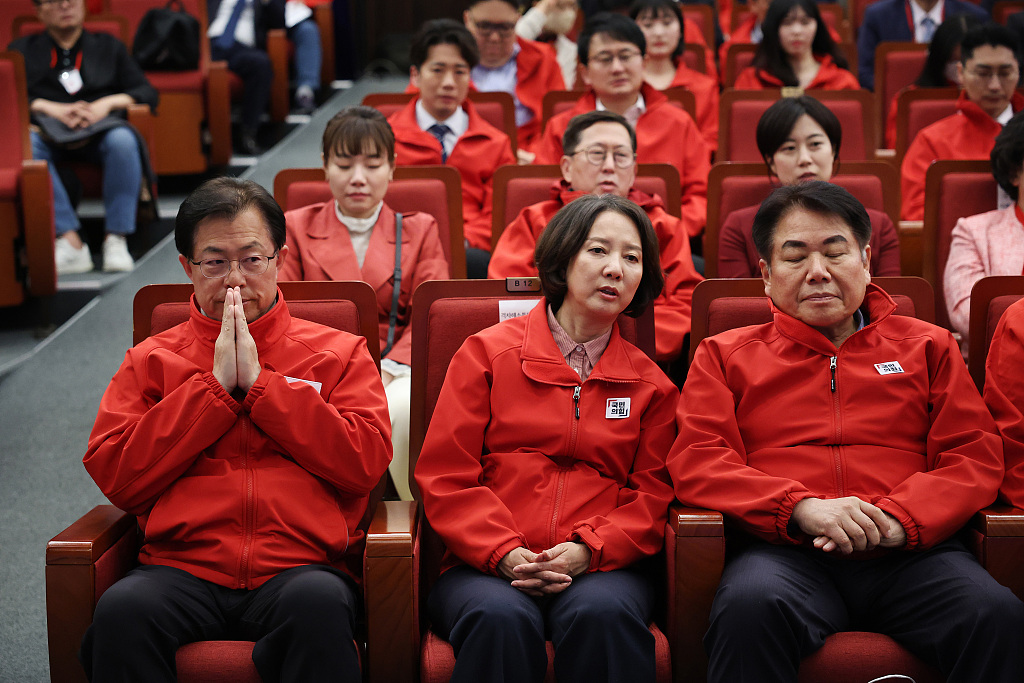 Members of the South Korean ruling People Power Party wait for news on the results of exit polls for the parliamentary election at the National Assembly on April 10, 2024 in Seoul, South Korea. /CFP
Members of the South Korean ruling People Power Party wait for news on the results of exit polls for the parliamentary election at the National Assembly on April 10, 2024 in Seoul, South Korea. /CFP  Japan’s modified destroyer, JS KAGA. April 6, 2024. /Photo courtesy Japan Maritime Self-Defense Force
Japan’s modified destroyer, JS KAGA. April 6, 2024. /Photo courtesy Japan Maritime Self-Defense Force 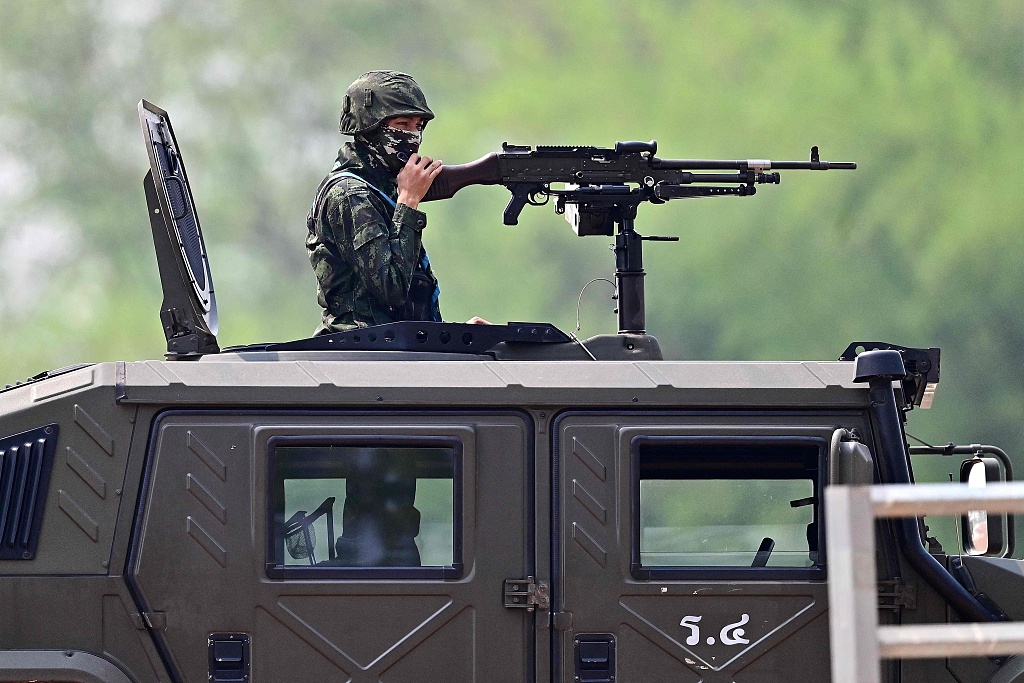 Thai military personnel keep guard atop an armored vehicle along the Moei river on the Thai side, next to the 2nd Thai-Myanmar Friendship Bridge in Thailand’s Mae Sot district on April 11, 2024. /CFP
Thai military personnel keep guard atop an armored vehicle along the Moei river on the Thai side, next to the 2nd Thai-Myanmar Friendship Bridge in Thailand’s Mae Sot district on April 11, 2024. /CFP 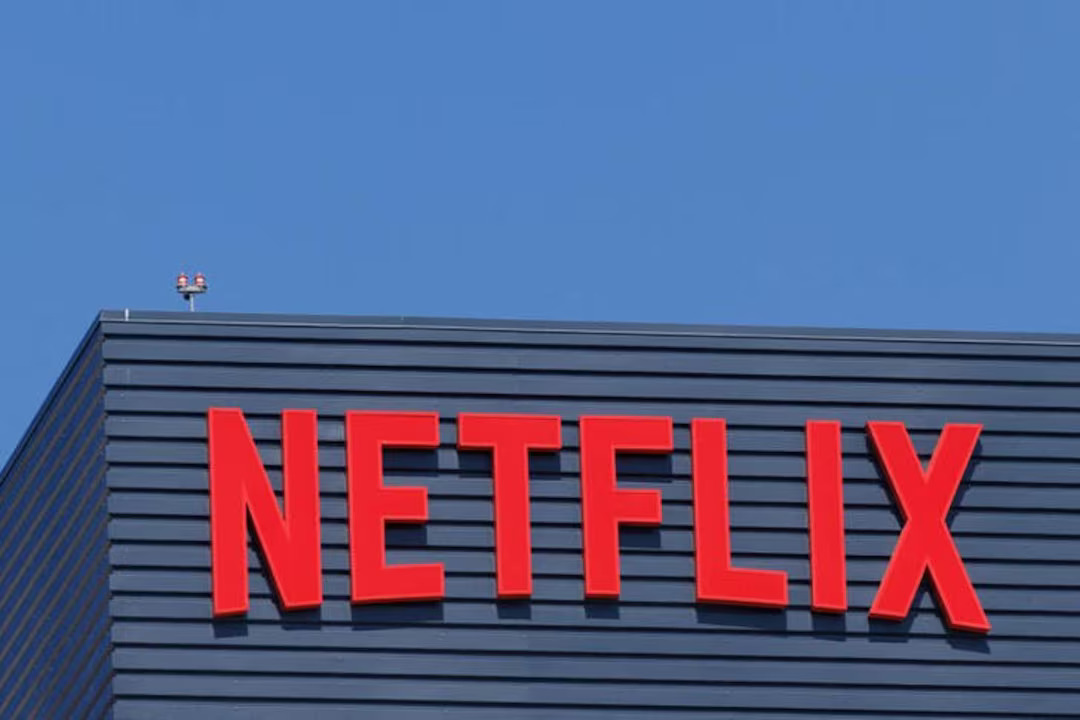 The Netflix logo on one of their Hollywood buildings in Los Angeles, California, U.S., July 12, 2023. /Reuters
The Netflix logo on one of their Hollywood buildings in Los Angeles, California, U.S., July 12, 2023. /Reuters 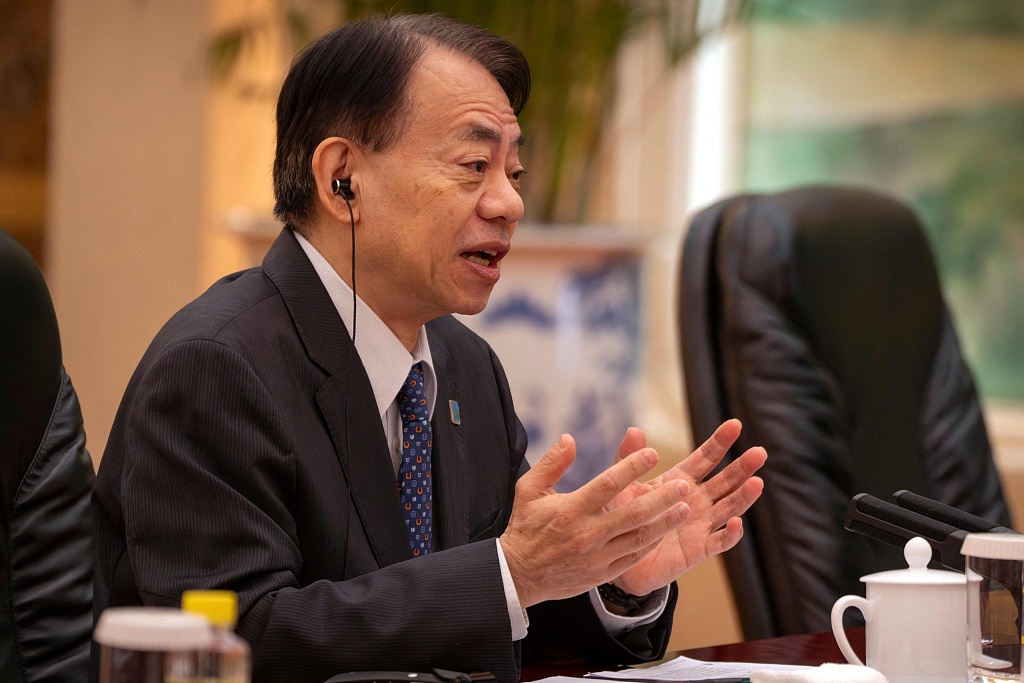 Masatsugu Asakawa, president of the Asian Development Bank, meeting with Chinese officials at the Great Hall of the People in Beijing, China on July 11, 2023. /CFP
Masatsugu Asakawa, president of the Asian Development Bank, meeting with Chinese officials at the Great Hall of the People in Beijing, China on July 11, 2023. /CFP 
 /CFP
/CFP 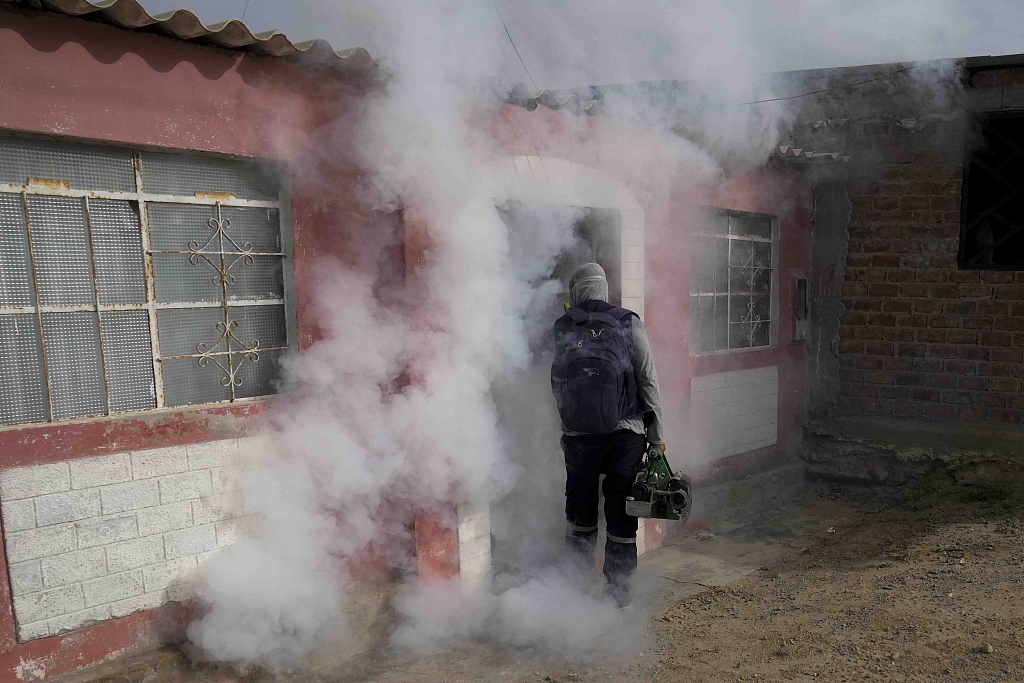
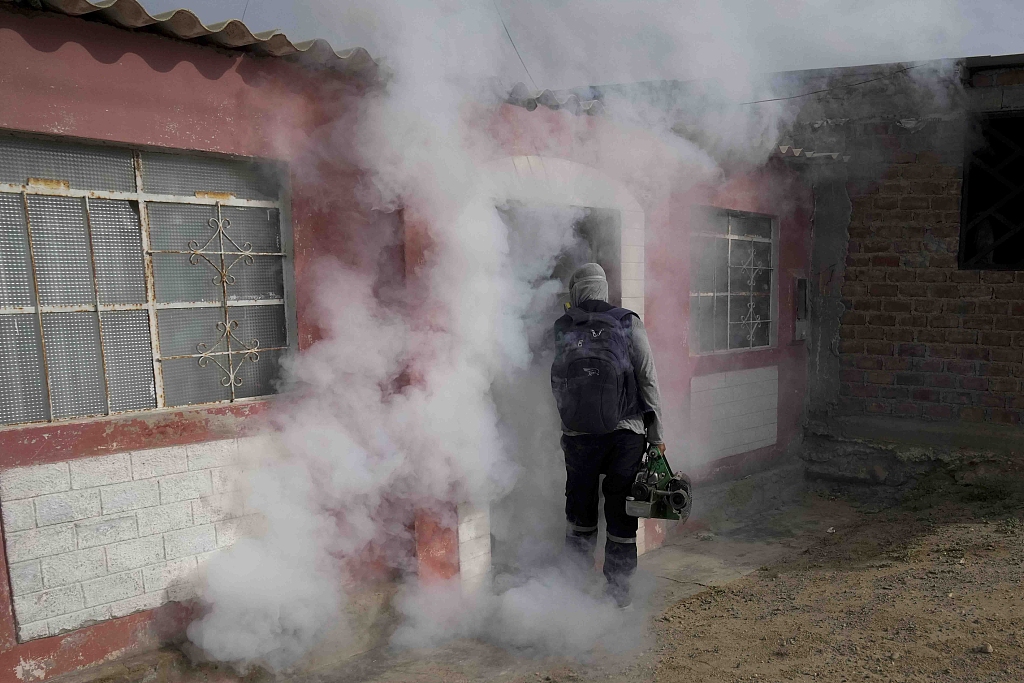 A health worker leaves a home after fumigating it for mosquitoes to help mitigate the spread of dengue in the Las Penitas area of Talara, Peru, March 1, 2024. /CFP
A health worker leaves a home after fumigating it for mosquitoes to help mitigate the spread of dengue in the Las Penitas area of Talara, Peru, March 1, 2024. /CFP 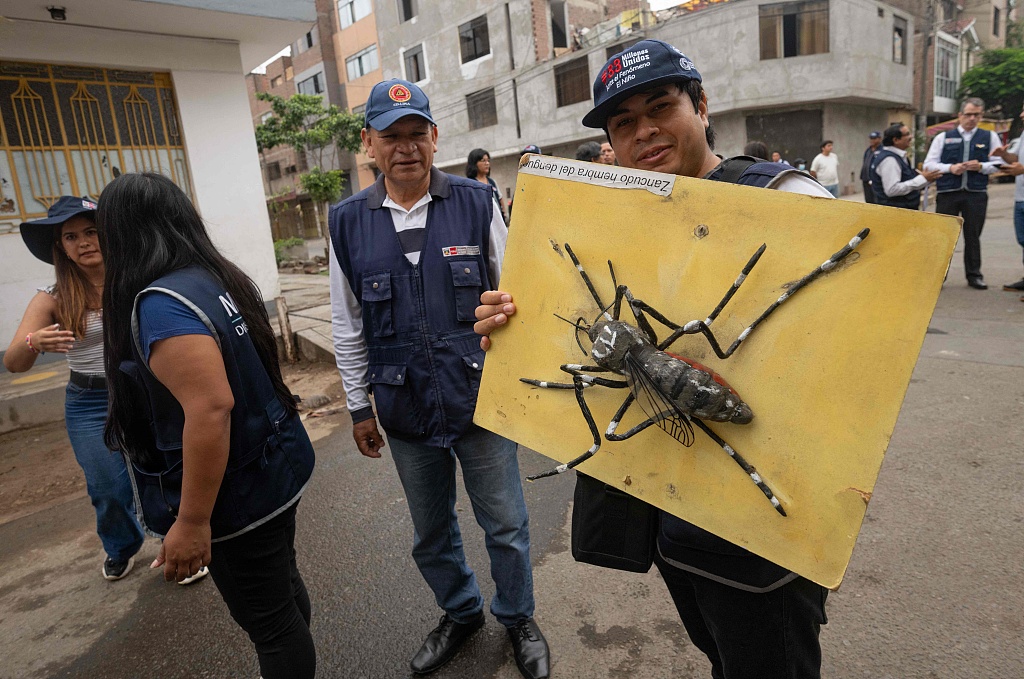 A staff member of the Peruvian Ministry of Health shows an image of an Aedes aegypti mosquito at the populous district of El Agustino in Lima, Peru, February 27, 2024. /CFP
A staff member of the Peruvian Ministry of Health shows an image of an Aedes aegypti mosquito at the populous district of El Agustino in Lima, Peru, February 27, 2024. /CFP